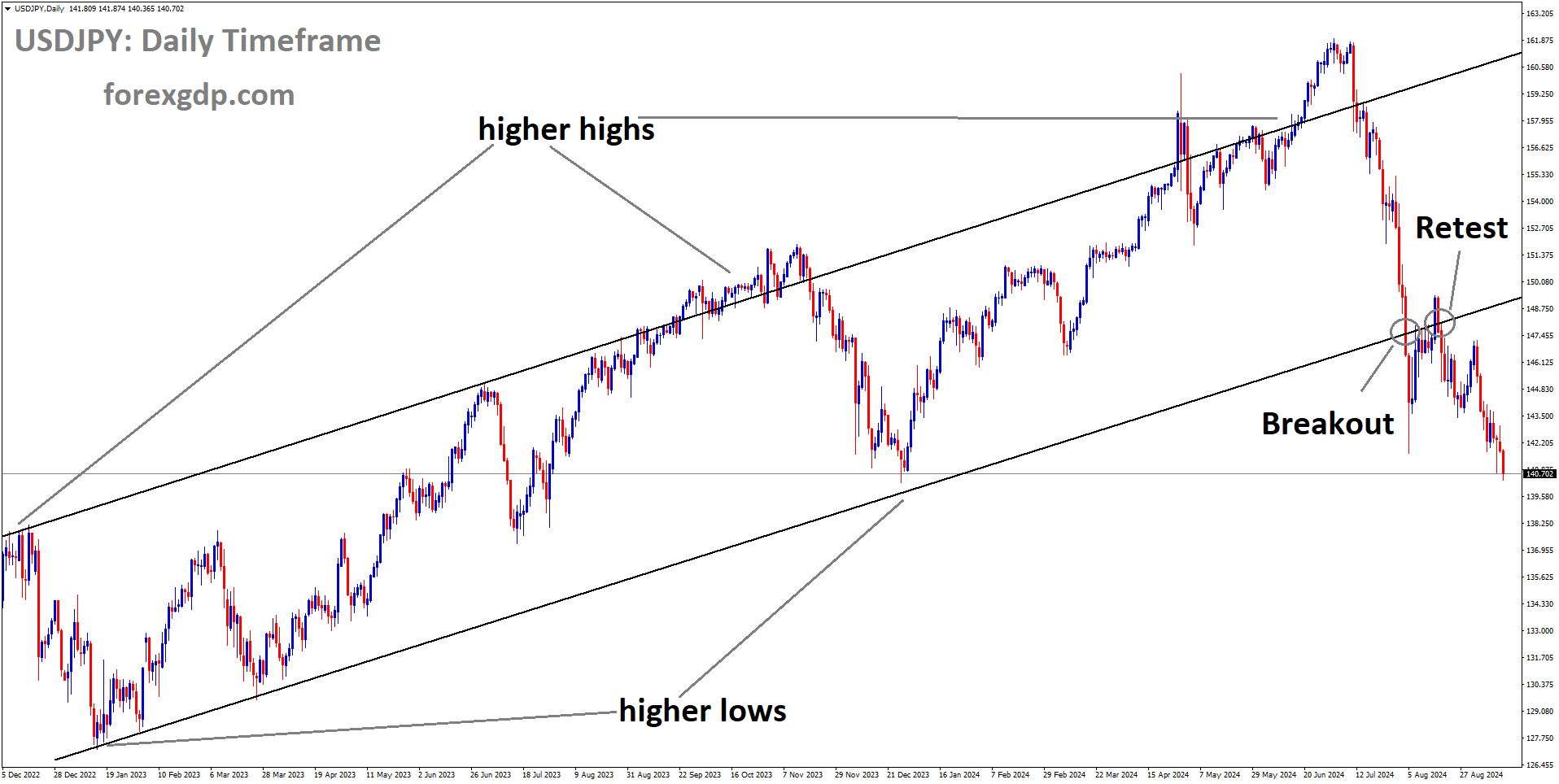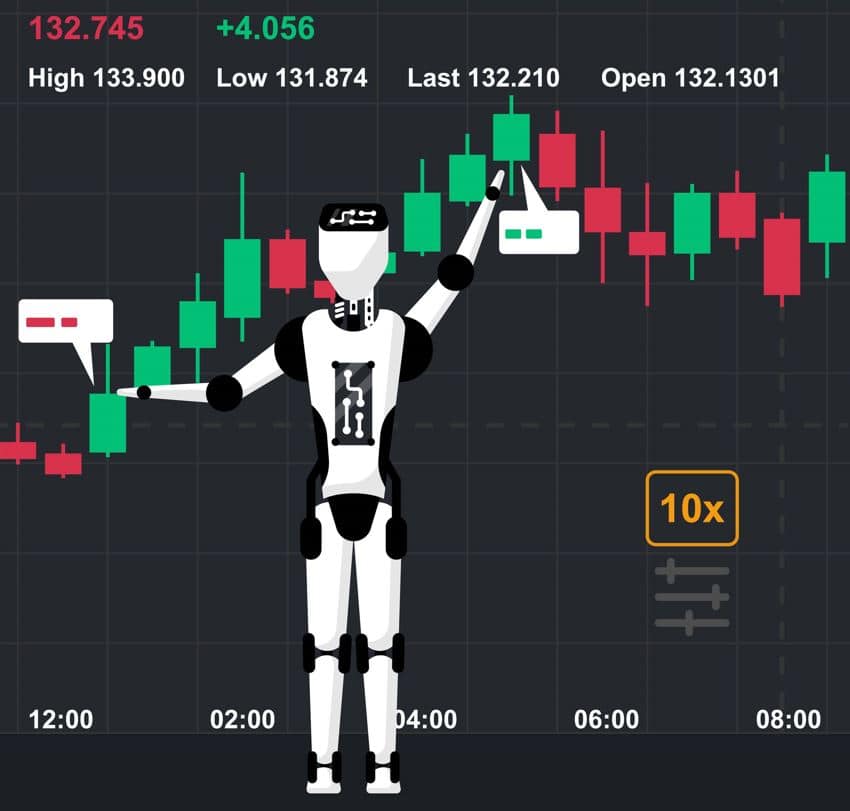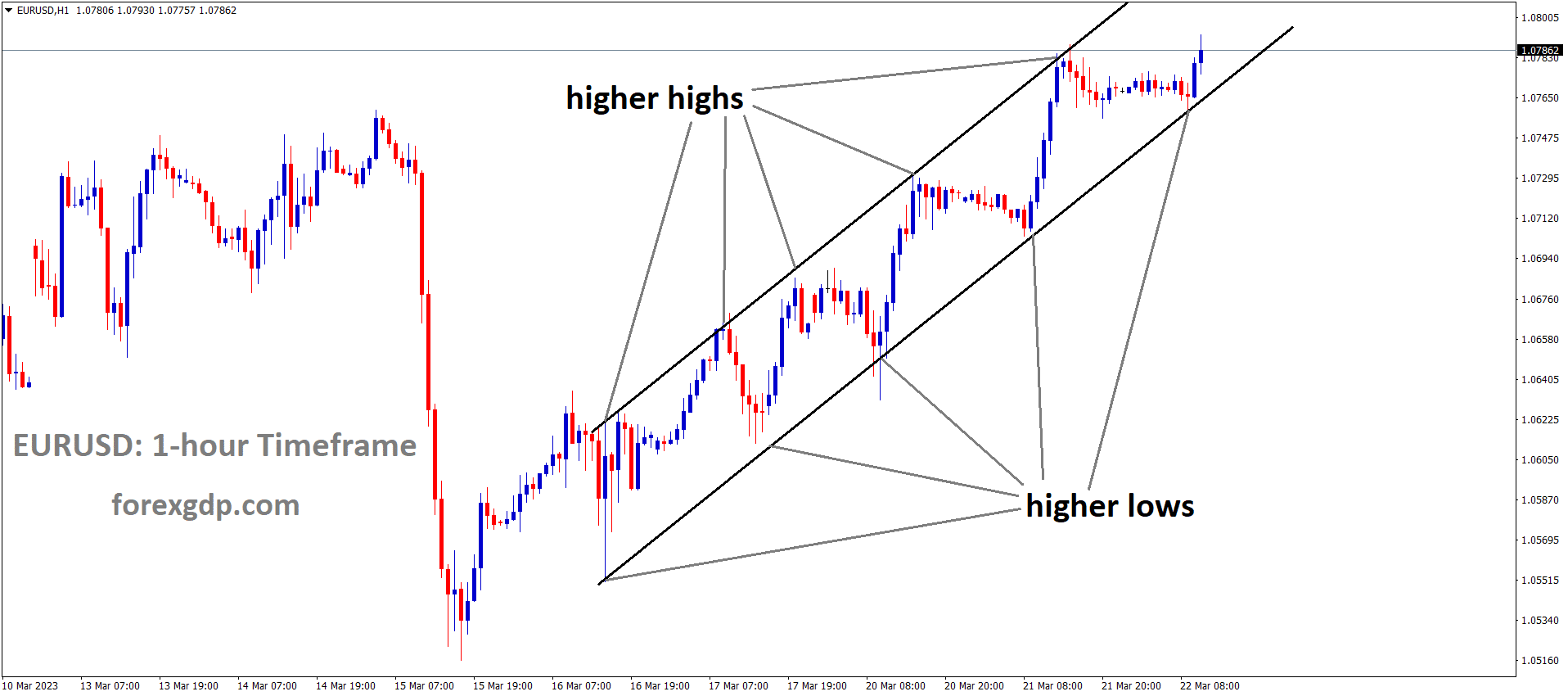USDJPY is moving in a descending channel, and the market has rebounded from the lower low area of the channel
#USDJPY Analysis Video
Why the USD/JPY Pair Is Facing Selling Pressure: A Look at the Latest Trends
The USD/JPY currency pair has been attracting attention lately due to its notable decline. This week, the pair reached a fresh year-to-date (YTD) low, and traders are closely watching what could happen next. With important central bank meetings coming up, there’s much to consider when trying to predict where the pair might head next. Let’s take a deep dive into the factors influencing the USD/JPY pair and what’s been happening recently.
Diverging Policies Between the Federal Reserve and Bank of Japan
One of the biggest factors currently weighing down the USD/JPY pair is the differing approaches to monetary policy between the Federal Reserve (Fed) in the United States and the Bank of Japan (BoJ).
Why Central Banks Matter
Central banks like the Fed and BoJ are responsible for setting interest rates, and these rates have a significant impact on the value of currencies. When a central bank raises interest rates, the currency usually becomes more attractive to investors because higher interest rates mean higher returns on investments in that currency. Conversely, lower interest rates tend to weaken a currency’s appeal.
In the case of the USD/JPY pair, investors are closely watching both the Fed and the BoJ to see how their respective policies will influence the value of the US Dollar (USD) against the Japanese Yen (JPY).
Fed’s Dovish Signals Weighing on the USD
In recent months, the Fed has been leaning toward a more dovish stance, meaning it may not be as aggressive in raising interest rates as previously thought. This change in expectations was partly driven by the release of softer-than-expected US Producer Price Index (PPI) data, which indicated that inflation in the US might be easing. As inflation cools down, there is less pressure on the Fed to continue raising interest rates aggressively.
USDJPY is falling after retesting the broken Ascending channel
This dovish sentiment from the Fed has led to a drop in US bond yields, particularly the 10-year government bond, which is often viewed as a benchmark for long-term interest rates. Lower bond yields tend to weaken the USD because they make investments in the US less attractive to foreign investors.
Bank of Japan Signals a Potential Rate Hike
On the other hand, the BoJ has been sending out more hawkish signals recently. While the BoJ has historically kept interest rates very low to support economic growth, there are now indications that this policy might be shifting. BoJ board members have hinted that the central bank might raise interest rates if inflation continues to rise in line with their forecasts.
For example, BoJ board member Junko Nakagawa mentioned that the BoJ would consider raising interest rates further if the economy and inflation stay on track. Another BoJ board member, Naoki Tamura, suggested that Japan’s short-term rates might need to rise to at least 1% by fiscal 2026 to achieve the bank’s 2% inflation target. This has led to speculation that the BoJ could announce an interest rate hike by the end of the year.
This potential for higher interest rates in Japan is making the Yen more attractive to investors, putting downward pressure on the USD/JPY pair.
What’s Influencing the Current Market Sentiment?
The Impact of Market Mood on USD/JPY
The overall mood of the market plays a big role in currency movements. When the market is in a risk-on mode, meaning investors are more willing to take risks, they tend to favor currencies associated with higher yields and growth prospects, such as the US Dollar. On the flip side, when the market is risk-averse, investors often flock to safe-haven currencies like the Japanese Yen.
At the moment, the market mood appears to be somewhat upbeat, which has limited the gains of the Yen despite the positive signals coming from the BoJ. Investors are holding off on making any major moves until the upcoming central bank meetings, where they hope to get a clearer picture of what’s ahead.
Central Bank Meetings to Watch
Next week will be crucial for the USD/JPY pair as both the Fed and the BoJ are scheduled to hold important policy meetings. The Fed’s meeting will take place over two days, with the decision expected on Wednesday. Investors will be paying close attention to any signals about future rate hikes or cuts. Following this, the BoJ will hold its own policy meeting on Friday, which could offer further insights into Japan’s monetary policy direction.
USDJPY is moving in a descending channel, and the market has reached the lower low area of the channel
These central bank meetings are likely to provide fresh impetus for the USD/JPY pair, and traders will be watching closely to see which direction it moves in next.
What to Expect in the Near Term?
While it’s hard to predict exactly what will happen, the USD/JPY pair seems to be on track for further losses, having already posted two straight weeks of declines. The narrowing of the US-Japan interest rate differential is a key factor in this, and unless the Fed signals a change in its dovish tone, the USD could continue to face selling pressure.
On the flip side, any surprise moves by the BoJ, such as an unexpected rate hike or more hawkish comments from policymakers, could further boost the Yen. The key takeaway is that the upcoming central bank meetings will likely set the tone for the USD/JPY pair in the near future.
Short-Term Trends to Watch
- Fed’s Policy Decision: Will the Fed take a more cautious approach to interest rates, or could there be a surprise rate hike? This will be key for the USD.
- BoJ’s Stance on Inflation: If the BoJ signals a stronger commitment to raising interest rates, the Yen could see a boost.
- Market Sentiment: Keep an eye on global market conditions. A shift towards risk aversion could benefit the Yen, while a more risk-on environment might help the USD.
Final Summary: Where Could USD/JPY Be Headed Next?
In summary, the USD/JPY pair has been under pressure due to diverging monetary policies between the Fed and the BoJ. The Fed’s dovish signals have weakened the USD, while the BoJ’s hawkish hints are supporting the Yen. As both central banks prepare for their upcoming meetings, traders are waiting for more clarity on where interest rates might go next.
The narrowing of the interest rate gap between the US and Japan has been a key factor driving the USD/JPY lower, and this trend could continue if the Fed maintains its dovish stance. However, with central bank meetings on the horizon, the direction of the USD/JPY pair is still uncertain.
Ultimately, the next move for USD/JPY will depend on the outcome of these meetings and how the market interprets them. Traders should keep an eye on central bank decisions and any shifts in market sentiment, as these will be the key drivers of the pair’s movements in the coming weeks.
Don’t trade all the time, trade forex only at the confirmed trade setups
Get more confirmed trade signals at premium or supreme – Click here to get more signals , 2200%, 800% growth in Real Live USD trading account of our users – click here to see , or If you want to get FREE Trial signals, You can Join FREE Signals Now!









